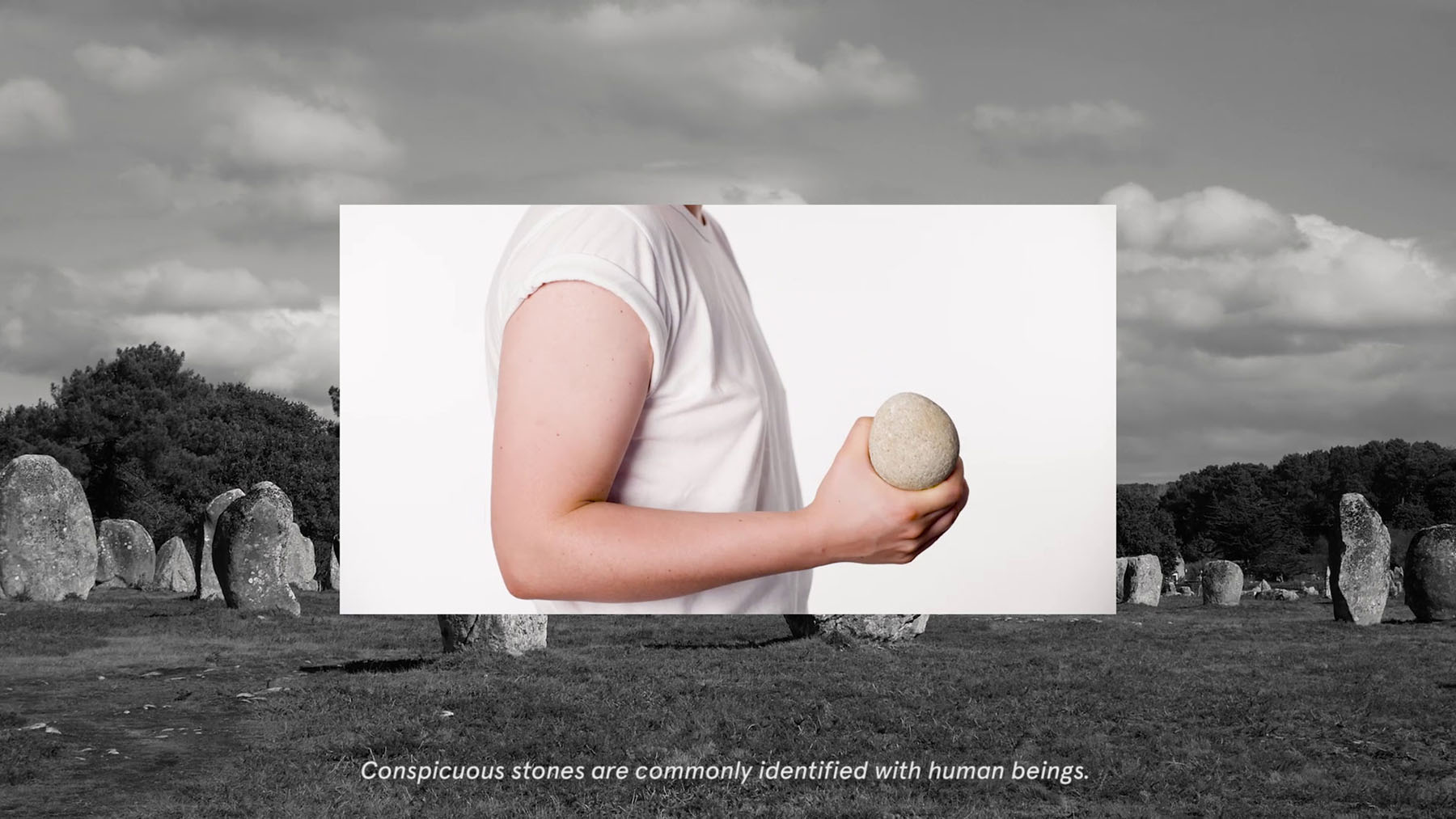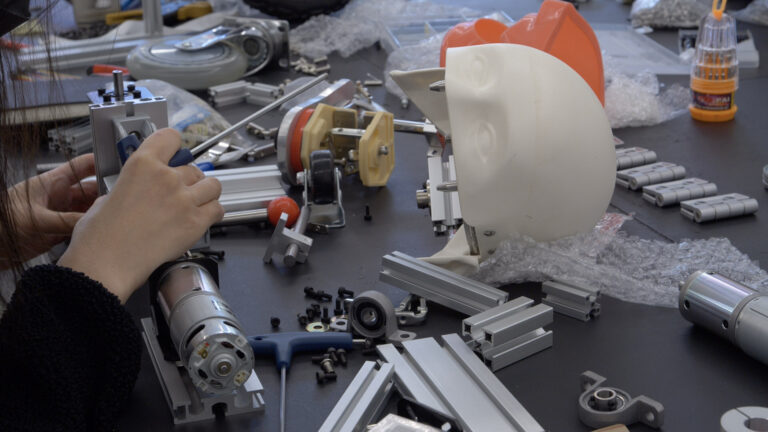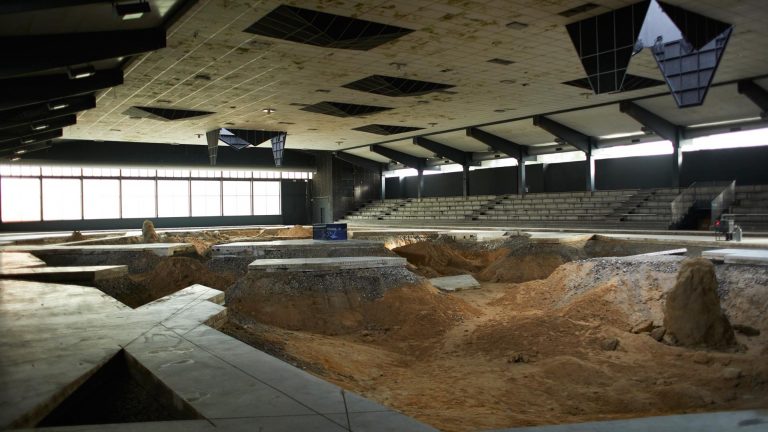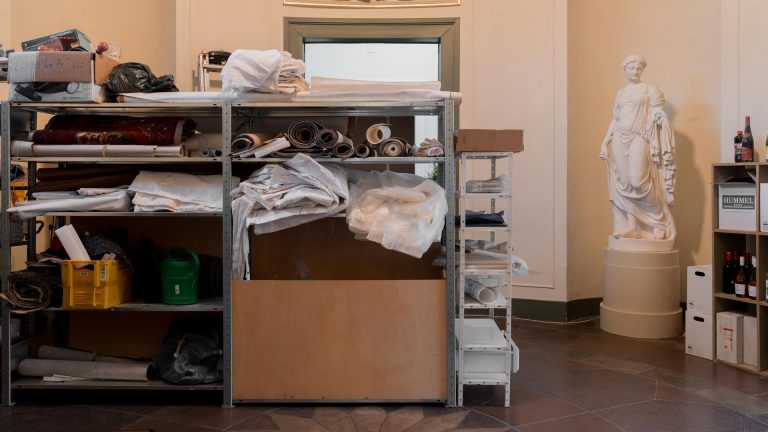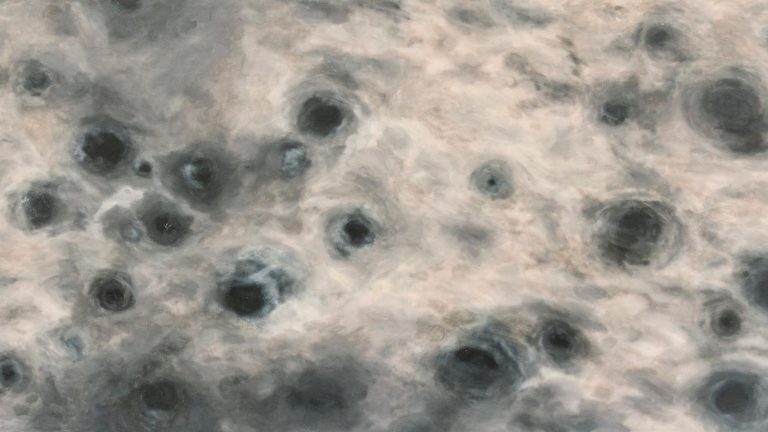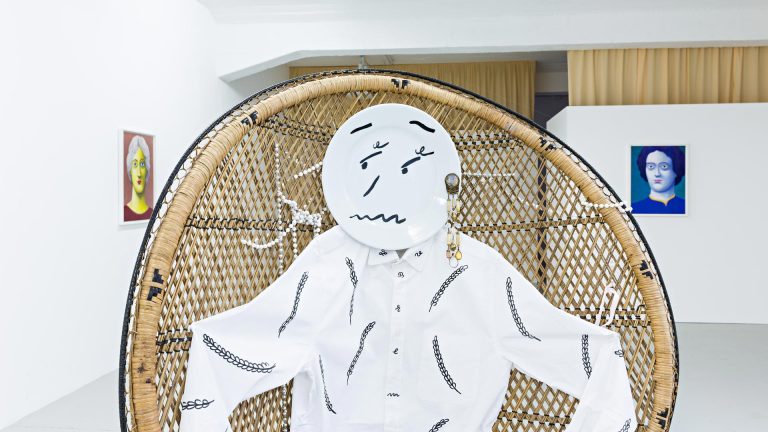Artist: Nona Inescu
Exhibition title: Corporealle
Curated by: Nadja Quante
Venue: Künstlerhaus Bremen, Bremen, Germany
Date: July 6 – September 1, 2019
Photography: Franziska von den Driesch / all images copyright and courtesy of the artist, Künstlerhaus Bremen and SABOT
Corporealle, presents works by artist Nona Inescu (b. 1991 in Bucharest) that focus on the human interaction with natural and primitive materials – animate and inanimate. Inescu’s interdisciplinary art practice encompasses photographs, videos, sculptural installations and objects. The artist combines found objects from nature, such as stones or corals, with artificial or processed materials that imitate natural qualities. She dissects objects, removing them from their contexts, to carefully arrange them in sensual, poetic compositions of formal similarities and material juxtapositions in the exhibition space. Stones are enlivened; subject and object merge into each other and are no longer clearly distinguishable. The artist draws analogies between human, animal, vegetal and mineral features and proposes possible interactions between human and non-human bodies through physical contact or touch. In this way, Inescu examines the interrelations of shaping or giving shape: Have humans shaped nature, or has nature shaped humans? To push these questions further, Inescu uses artistic means to carry out an archaeology of design. Has the human hand formed the stone to be a tool or the stone the hand that uses the tool?
The works in the exhibition present different aspects of this reciprocal shaping between man and nature.
In the entrance area, the photograph Defense (2017) depicts a hand whose fingers are armed with aloe leaves and a shell, while the back of the hand is protected with a padded combat glove that acts like a defensive shield.
The five photographs from the series Concretions (Geophilia) (2017) document various encounters of a human body with stone formations. Through the colour reduction of the black-and-white photographs, forms and textures are emphasized and the viewer’s attention continually alternates between the human appearance and the stone structure. The body dressed in black momentarily becomes the shadow of the stone or disappears into the crevices. The classical presentation of the photographs can also be understood as an homage to historical, feminist artistic positions such as Mara Alvares or Ana Mendieta, who explore the relationship between body and landscape.
Like archaeological finds, variously shaped ceramic objects reminiscent of vertebrae and bones, horse teeth, flintstones or historical tools lie in the sand. Some of the objects are connected by chains. Due to the rectangular shape of the box and the connecting chains, the installation appears like a drawing or tableau. The work as well as its title Acumen (2019) refers to the organic origin of tools, which in human history are regarded as the origin of our civilization and culture. The word denotes the pointed taper of an organic body as well as human sharpness of mind.
The fine stencil drawing Fenestration (after Monstera deliciosa) (2019) depicts the holes in a leaf of a Monstera deliciosa and refers to the connection in the terminology of architecture, anatomy and botany.
The video Vestigial Structures (2018) initially appears as if the photographs from the front room are set in motion. A female figure crawls out of a stone. The black-and-white scenes show the mythical stone formations in Carnac, Brittany and are superimposed by images of a (queer) body doing exercises with stones, some of which are attached to the body like bone outgrowths. The images are accompanied by a soundtrack of spherical sounds and a voice that recites a text that is also subtitled. The text is based on an excerpt from the book “A Land” (1951) by the British archaeologist Jacquetta Hawkes (1919-1996) and deals with the origin myth of stone formations, in which the unusual formations are held to be fossilized people – especially fossilized women.
For the works Litho/Swing I + II (2017) hanging in the room and the sculpture Introvert V (2019) lying on the floor, Inescu used so-called concretions. These found sandstone concretions from the Romanian region around Costesti are said to grow and move. They hang in leather costumes on chains from the ceiling or lie crammed into a small metal cage with a leash on the floor, reminiscent of SM instruments or Pilates equipment.
The photograph of Lithosomes (2017) on the wall next to the floor sculpture Introvert V illustrates the interrelation between human and nature – stone and hands. The hands embrace or cradle the stone and at the same time look as if they were formed by it.
At the back of the exhibition there is a network of formal similarities and cross-references: The car seat of Crash Test Dummy (passenger) (2018) enthrones a coral. A closer look reveals similarities between the structure of the perforated leather cover and the porous surface of the coral. The shape of a coral is again formed by the hands in the photograph Reef (2018), hanging to the left.
The metal ribcage Deep Breathing (2019) with the coral fragments (in front of the curtain on the right wall) refers to the similarity between the molecular composition of human bones and corals, while the object Right phalanx (2018), made of fired clay pieces connected by chains, form the skeleton of a hand (phalanx) and draws a connection to the video behind the curtain. In the 3D animation Ariel’s Song (2018), the artist lets the skeleton of a human hand merge with a coral in a touching way.
Inescu’s work challenges prevailing subject-object relations as well as the hierarchy between man and nature. Through playing with the similarity of forms and by setting human and non-human things on an equal level, Inescu confounds the sense of what is animate or not and prompts new ways of looking at our relationship with “nature”.
„The archaeology of design is not simply about the history of the human animal as revealed in all the layers of artifacts. It uncovers the sedimented ways of reinventing the human.”*
*Beatriz Colomina & Mark Wigley: are we human? notes on an archaeology of design, Zurich 2016/2018, p. 10.
Nona Inescu, Corporealle, 2019, exhibition view, Künstlerhaus Bremen
Nona Inescu, Corporealle, 2019, exhibition view, Künstlerhaus Bremen
Nona Inescu, Acumen, 2019
Nona Inescu, Corporealle, 2019, exhibition view, Künstlerhaus Bremen
Nona Inescu, Concretions (Geophilia) I, 2017
Nona Inescu, Corporealle, 2019, exhibition view, Künstlerhaus Bremen
Nona Inescu, Vestigial Structures (video still), 2018
Nona Inescu, Vestigial Structures (video still), 2018
Nona Inescu, Vestigial Structures (video still), 2018
Nona Inescu, Corporealle, 2019, exhibition view, Künstlerhaus Bremen
Nona Inescu, Corporealle, 2019, exhibition view, Künstlerhaus Bremen
Nona Inescu, Corporealle, 2019, exhibition view, Künstlerhaus Bremen
Nona Inescu, Lithosomes, 2017
Nona Inescu, Introvert V, 2019
Nona Inescu, Corporealle, 2019, exhibition view, Künstlerhaus Bremen
Nona Inescu, Deep Breathing, 2019
Nona Inescu, Right phalanx, 2018
Nona Inescu, Corporealle, 2019, exhibition view, Künstlerhaus Bremen
Nona Inescu, Corporealle, 2019, exhibition view, Künstlerhaus Bremen
Nona Inescu, Corporealle, 2019, exhibition view, Künstlerhaus Bremen
Nona Inescu, Crash Test Dummy (passenger), 2018
Nona Inescu, Corporealle, 2019, exhibition view, Künstlerhaus Bremen
Nona Inescu, Ariel’s Song (video still), 2018
Nona Inescu, Ariel’s Song, 2018
Nona Inescu, Corporealle, 2019, exhibition view, Künstlerhaus Bremen
Nona Inescu, Fenestration (after Monstera deliciosa), 2019
Nona Inescu, Corporealle, 2019, exhibition view, Künstlerhaus Bremen
Nona Inescu, Defense, 2017








